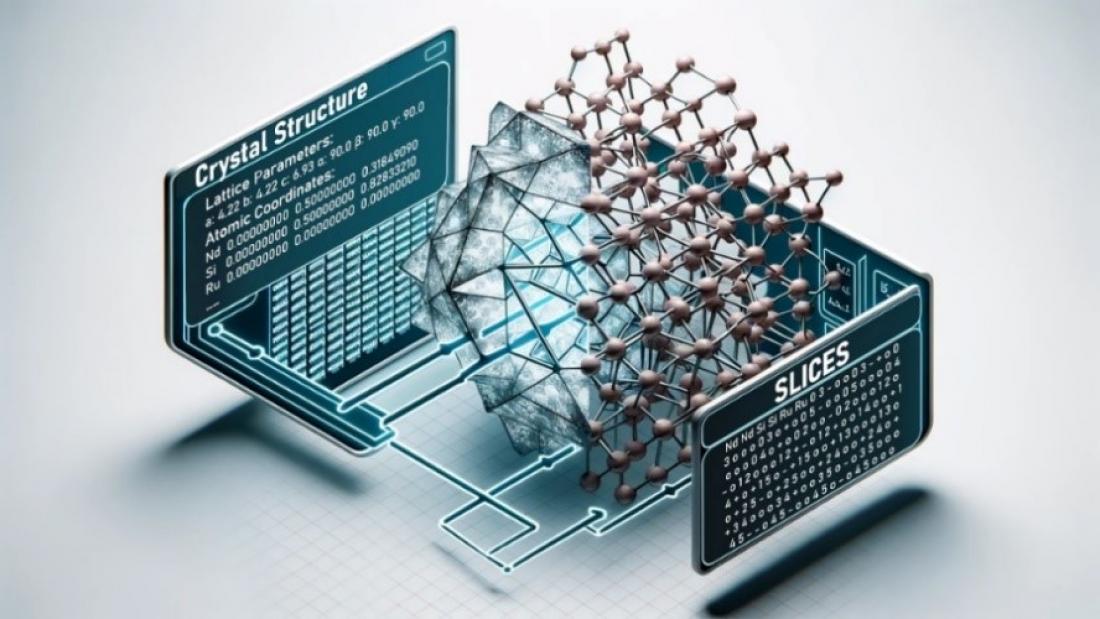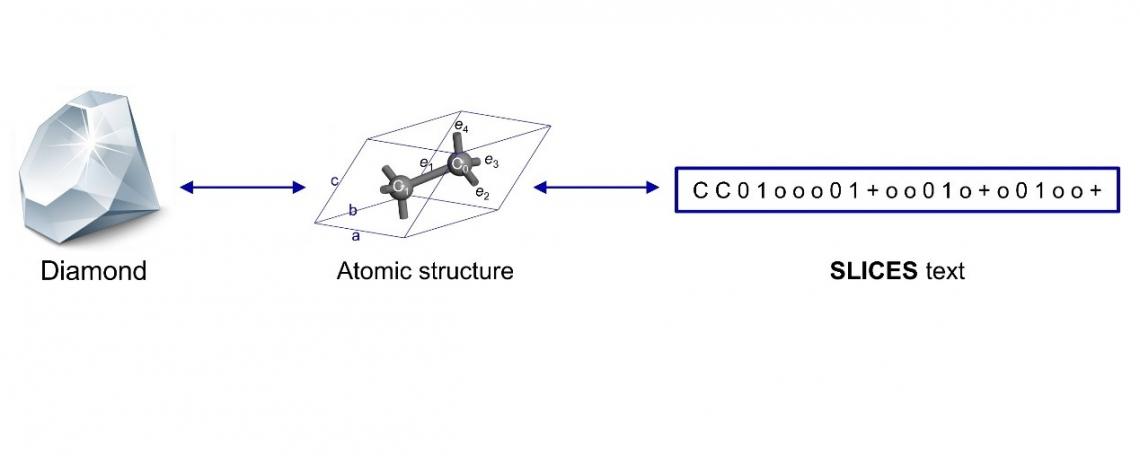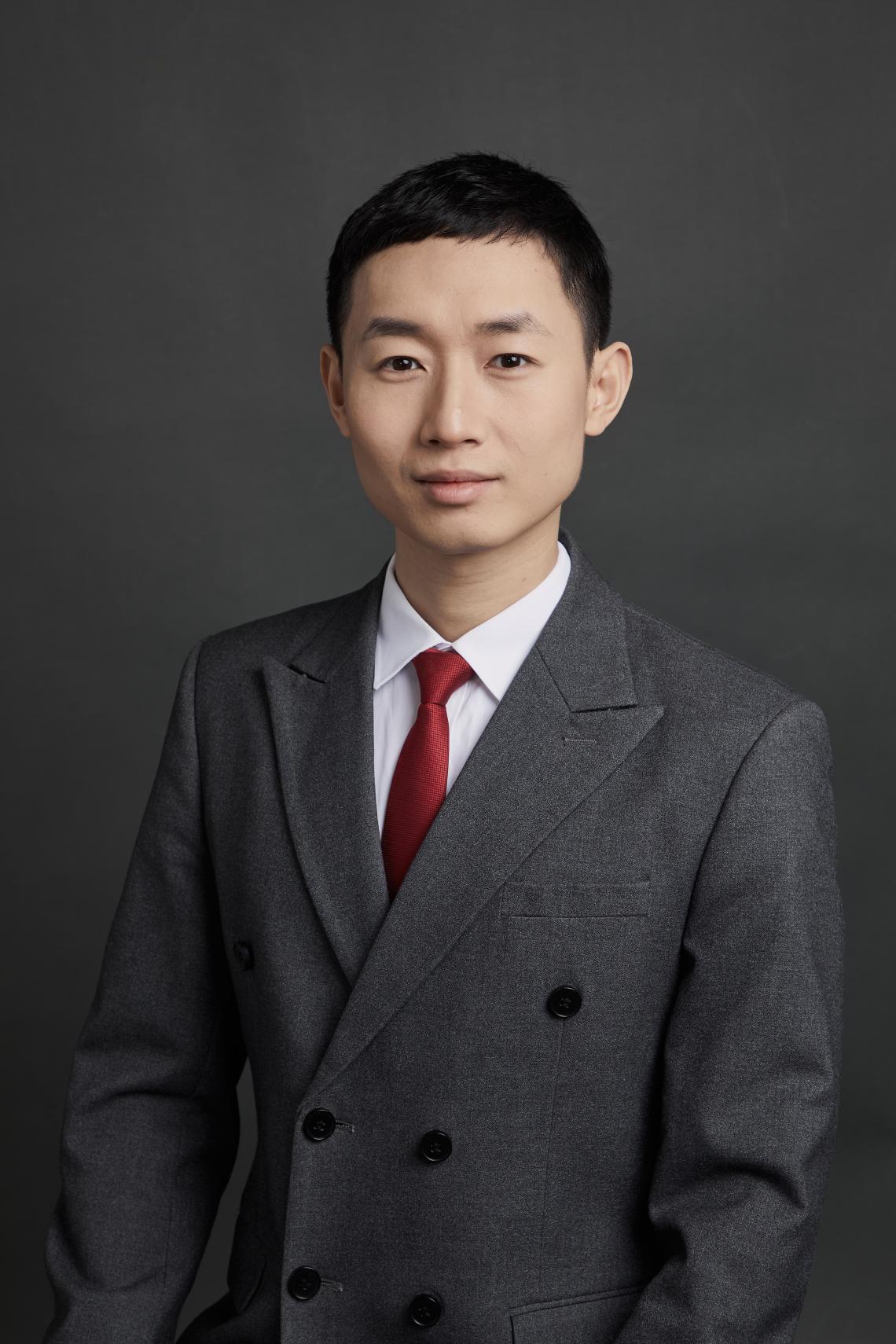Conceptual visualisation of the new crystal language “Simplified line-input crystal-encoding system” (SLICES) encodes the arrangement of atoms in crystals into texts.
A research team led by Lingnan University's School of Interdisciplinary Studies Assistant Professor Xiao Hang recently devised a “crystal language” that enables artificial intelligence (AI) to create new materials with desired properties (Figure 1). This groundbreaking discovery holds the potential for creating the next revolutionary semiconductor material that makes solar energy abundant and affordable, and opens possibilities for the development of novel superconductors that effortlessly transport clean electricity with zero losses. The findings of this breakthrough research have been published in the prestigious academic journal Nature Communications, which is also the first time Lingnan University scholar published a lead-author paper on the esteemed Nature series.
The “crystal language”, created by Prof Xiao and his research team, is called "Simplified line-input crystal-encoding system” (SLICES). This technology can encode the arrangement of atoms in crystals into texts, much like musical notes capturing melodies. An example is the crystal structure of diamond, both the composition and connectivity of the diamond structure can be obtained by parsing the SLICES string (Figure 2).
This new method, in comparison to the conventional "Crystal Diffusion Variational Autoencoder" (CDVAE) adopted by the scientific community, significantly enhances the accuracy of crystal structure decoding. The research team conducted experiments on SLICES, decoding over 40,000 different crystal structures, and the results revealed an outstanding accuracy of over 94 per cent. Prof Xiao points out that SLICES can precisely decode the actual structure of crystals from their SLICES texts, indicating its great potential to become a standard tool for the development of new AI driven materials.
“Existing representations of crystal structures often cannot reliably convert back and forth between texts and actual atomic arrangements. This lack of ‘invertibility’ has hindered deployment of AI for materials discovery. SLICES meets this key prerequisite, guaranteeing the code strings can recreate original crystal structures. SLICES also satisfies “invariance”, remaining unchanged when crystals are rotated, translated or reordered. The topological essence encoded in SLICES persists irrespective of rotational or translational variations, allowing more efficient AI learning. This pivotal invertibility empowers deployment of AI models to design and discover novel materials,” said Prof Xiao.
In terms of evidence, SLICES has enabled the fully autonomous discovery of 14 promising semiconductor candidates tailored for renewable energy technologies (Figure 3). This allows AI to gain insights from known materials, proposing hypothetical new structures dissimilar from existing ones and rigorous quantum mechanical validations.
Prof Xiao further explained: “SLICES as the first text-based invertible and invariant crystal representation, opening up many exciting opportunities in the inverse design of crystalline solids. In the past few years, we have witnessed tremendous advances in generative models ranging from images, videos, speech, to proteins and molecules. We envision solid materials being the next frontier, thanks to this new capacity for data-efficient, chemistry-integrated exploration empowered by representations like SLICES.”
The full paper can be read via here: https://www.nature.com/articles/s41467-023-42870-7.
Prof Xiao Hang is the first Lingnan scholar to publish a lead-author paper on the esteemed Nature series.





